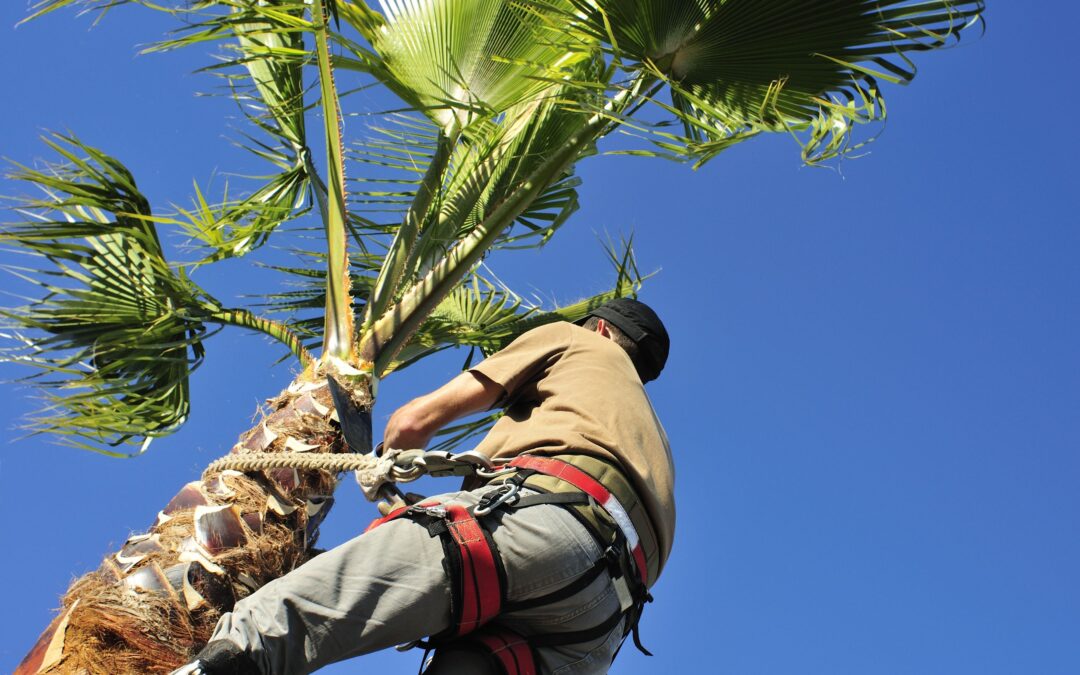Diseases in trees can be caused by different factors, including fungi, bacteria, and environmental stressors — making it crucial to identify the disease to treat it. Trees provide numerous benefits to people and the environment that are often overlooked.
Unfortunately, tree diseases destroy aesthetic beauty, reduce growth rates drastically, significantly decrease land conservation efforts, and devastate forests leading to economic losses beyond imagination.
In this blog post, we will look at five common tree diseases found in managed and natural landscapes — what causes them and how you can treat them for optimal health outcomes for your trees!
Dothistroma Needle Blight — Symptoms, causes, and treatments
Dothistroma Needle Blight is a fungal disease that primarily affects coniferous trees, particularly pine, and spruce. It is characterized by dead or brown lesions that develop on the needles, spreading from the needle tip downwards toward the base. Other symptoms may include twig dieback and cankers on the trunk.
The fungus responsible for Dothistroma Needle Blight thrives in warm, moist conditions, particularly in areas with high humidity levels. Prevention is key to this disease as there are no known cures once the symptoms appear.
Dutch Elm Disease — Symptoms, causes, and treatments
Dutch Elm Disease is a serious condition that has affected countless trees throughout the world. Symptoms of the disease can vary but typically include wilting leaves, yellowing foliage, and brown discoloration in the bark.
The disease is caused by a fungus that invades the tree’s vascular system, which ultimately leads to the death of the tree. While there is no cure for Dutch Elm Disease, treatments are available to slow the spread of the disease and possibly prolong the tree’s life.
One treatment method involves injecting the tree with a fungicide to protect it from the disease, while another approach involves removing infected trees to prevent the fungus from spreading to healthy ones.
Overall, combating Dutch Elm Disease requires a concerted effort from tree professionals, homeowners, and communities alike.
Oak Wilt — Symptoms, causes, and treatments
Oak Wilt is a disease that devastates oak trees by blocking the flow of water and nutrients throughout the entire plant. Like Dutch Elm disease, this disease is caused by a fungus that invades the tree’s vascular system, leading to wilting leaves, branch dieback, and death.
The symptoms of Oak Wilt can go unnoticed for several years, making early detection vital. The disease spreads through interconnected roots or by a beetle carrying fungal spores to open wounds in healthy trees.
Fortunately, there are several treatments available to cure infected oaks, including fungicides, sanitation, and tree removal. Understanding the symptoms, causes, and treatments of Oak Wilt is essential to protect our oak tree populations and forest health.
Verticillium Wilt — Symptoms, causes, and treatments
Verticillium wilt is a fungal disease that affects a wide range of plants, including trees, shrubs, and vegetables. The disease is caused by the fungus Verticillium dahliae, which invades the roots and stems of the plant, causing wilting, yellowing, and stunted growth.
Symptoms can vary depending on the tree species but typically include wilting of leaves, discoloration of stems, and yellowing or browning of the foliage. While there is no guaranteed cure for Verticillium wilt, there are treatments available that can help manage the disease.
These include removing diseased plant material, practicing crop rotation, and using fungicides. Early detection and proactive management are crucial for minimizing the impact of Verticillium wilt on your plants.
Phytophthora Root Rot — Symptoms, causes, and treatments
Phytophthora root rot is a devastating disease caused by soil-borne pathogens, affecting a wide range of trees. The symptoms of this disease may vary depending on the plant and the severity of the infection; however, yellowing, wilting, and stunted growth are common signs.
This disease is caused by a water mold, which thrives in moist or waterlogged soil conditions. If not treated on time, it can lead to death. Prevention is the best approach to controlling Phytophthora, including maintaining proper soil drainage, avoiding over-watering, and planting resistant cultivars.
Fungicides can also be used as a treatment for controlling Phytophthora root rot; however, they have to be applied correctly and according to instructions to be effective. If you notice any symptoms of Phytophthora root rot in your garden or farm, it is essential to act fast and seek advice from a gardening professional to ensure the health and well-being of your trees.
About Marshall Tree Service and Landscaping
Let experts at Marshall’s Tree Services and Landscaping take care of your trees and convert your home into a beautiful work of art. We provide pruning, installation, landscaping, pest control, and tree removal services in the Plantation, East Fort Lauderdale, and Davie regions. To schedule a free review or learn more about our tree trimming and landscaping services, call us at (754) 235-1926 or (786) 738-4886. To learn more about landscape design services in Broward County, you can also reach us at melchionnoj@yahoo.com or fill out our contact form to hear back from us.


Recent Comments